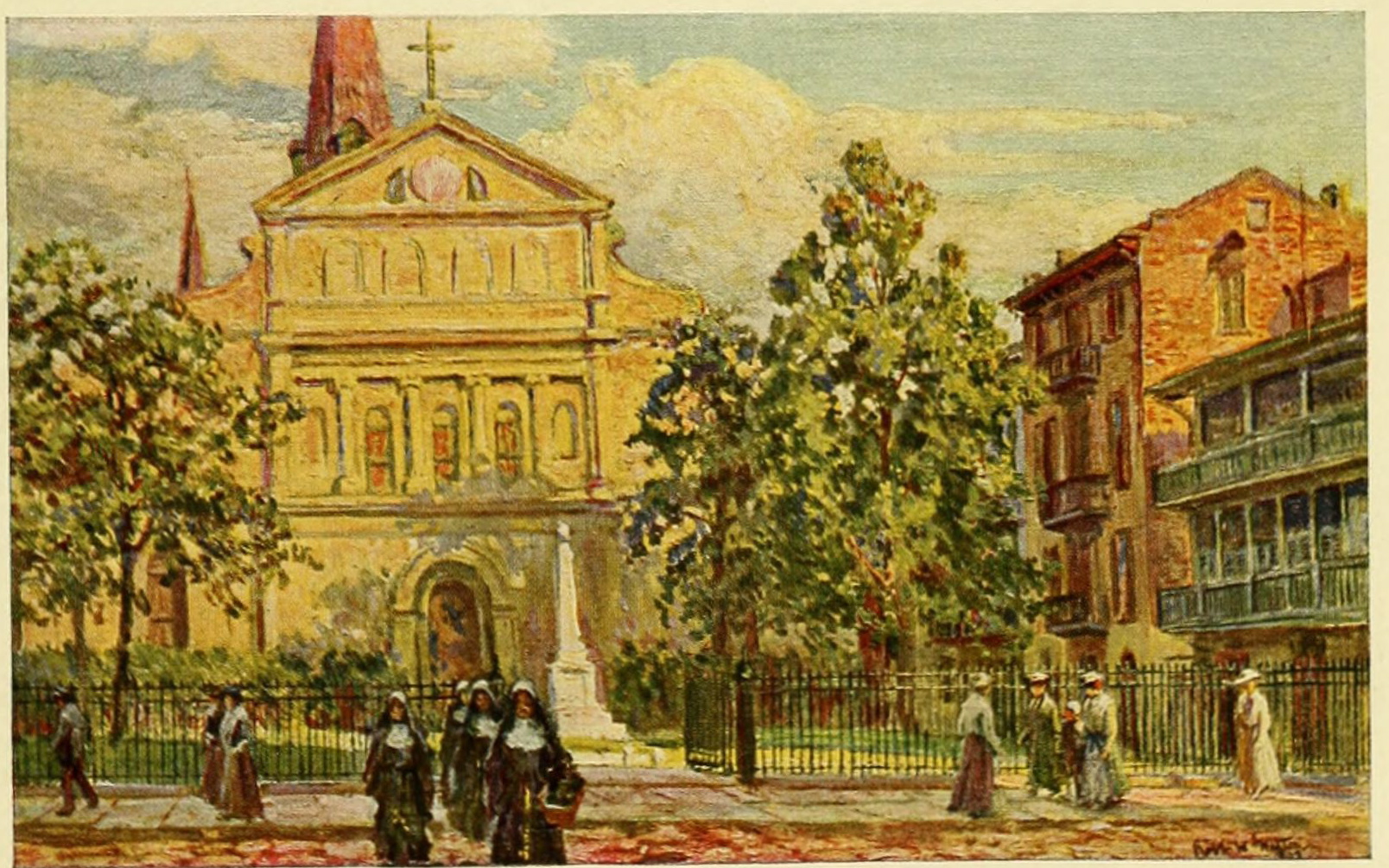St. Louis Cathedral
The Cathedral-Basilica of Saint Louis, King of France, also called St. Louis Cathedral (French: Cathédrale Saint-Louis, Roi-de-France), (Spanish: Catedral de San Luis), is the seat of the Roman Catholic Archdiocese of New Orleans and among the oldest cathedrals in the United States. The first church on the site was built in 1718; the third, built in 1789, was raised to cathedral rank in 1793. The cathedral was expanded and largely rebuilt in 1850, with little of the 1789 structure remaining.
Saint Louis Cathedral is in the French Quarter of New Orleans, Louisiana, USA, on the Place John Paul II (French: Place Jean-Paul II), a promenaded section of Chartres Street (rue de Chartres) that stretches one block between St. Peter Street (rue Saint-Pierre) on the upriver boundary and St. Ann Street (rue Sainte-Anne) on the downriver boundary. It is located next to Jackson Square and facing the Mississippi River in the heart of New Orleans, situated between the historic buildings of the Cabildo and the Presbytère. It is one of the few Roman Catholic churches in the United States that fronts a major public square.
Three Roman Catholic churches have stood on the site since 1718. The first was a crude wooden structure in the early days of the colony. Construction of a larger brick and timber church was begun in 1725 and was completed in 1727. Along with numerous other buildings, the church was destroyed in the Great New Orleans Fire (1788) on Good Friday, March 21, 1788. The cornerstone of a new church was laid in 1789 and the building was completed in 1794. In 1793 Saint Louis Church was elevated to cathedral rank as the See of the Diocese of New Orleans, making it one of the oldest cathedrals in the United States. In 1819, a central tower with the clock and bell was added.
Enlarging the building to meet the needs of the growing congregation had been pondered since 1834, and J. N. B. de Pouilly was consulted to design plans for a new building. De Pouilly also designed St. Augustine Church in Tremé, the first church building dedicated as a parish church outside the French Quarter. (The Mortuary Chapel on North Rampart had been dedicated in 1827 as a chapel, and St. Vincent de Paul was established in a little frame church in 1838 but not dedicated.) On March 12, 1849, the diocese contracted with John Patrick Kirwan to enlarge and restore the cathedral, using De Pouilly's plans.
These specified that everything except the lateral walls and the lower portions of the existing towers on the front facade be demolished. During the reconstruction, it was determined that the sidewalls would have to be demolished also. Then, during construction in 1850, the central tower collapsed. De Pouilly and Kirwan were replaced.[1] As a consequence, very little of the Spanish Colonial structure survived. The present structure primarily dates to 1850. The bell from the 1819 tower was reused in the new building. It remains there today. During the renovation, St. Patrick's Church served as the pro-cathedral for the city.
Bombing
On April 25, 1909, a dynamite bomb was set off in the Cathedral, blowing out windows and damaging galleries.[citation needed] The Cathedral suffered damage in the New Orleans Hurricane of 1915. The following year a portion of the foundation collapsed, necessitating the building's closure while repairs were made, from Easter 1916 to Easter 1917.
Hauntings
The Cathedral is said to be haunted by Fr. Antonio de Sedella, more commonly known as Père Antoine. He was a priest at the Cathedral and his body is buried within the church. He is said to walk the alley named after him next to the Cathedral in the early mornings.
Accounts of his apparitions by parishioners and tourists claim that he appears during Christmas Midnight Mass near the left side of the altar, holding a candle.
Another haunting is said to take place in the Cathedral by Pere Dagobert, a monk who resided in the church. It is said that his voice can be heard chanting the Kyrie on rainy days
